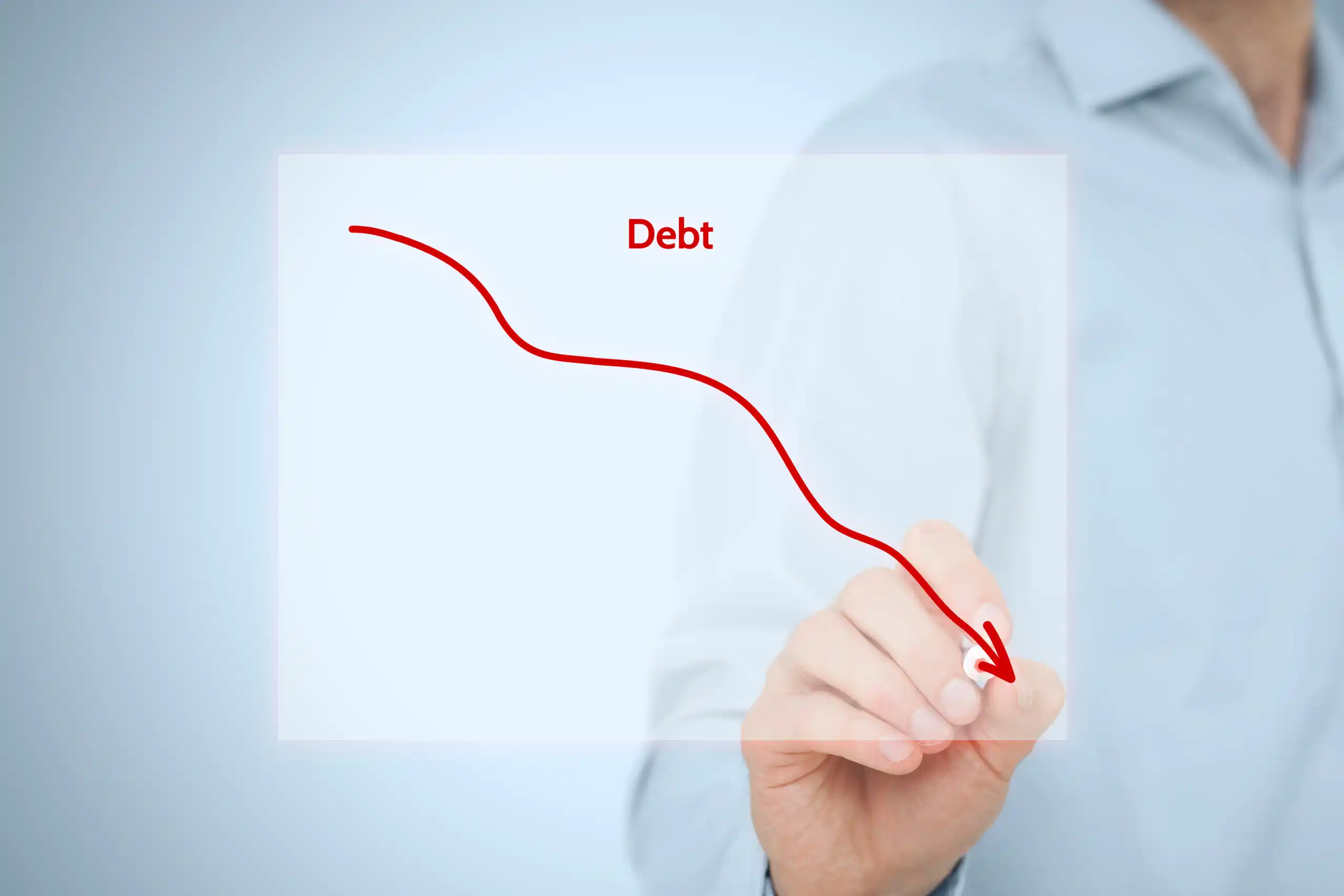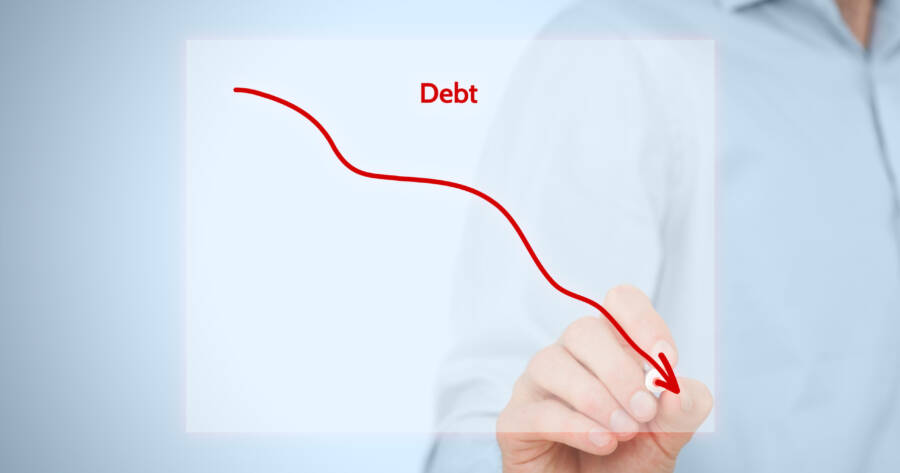One of the most common bits of financial advice is to pay off debt as quickly as you can. This can be important because the longer you are paying interest to others, the less time you have to put money to work on your behalf. However, before you go too far and create a plan that is impractical for you and your financial situation, it makes sense to study the situation and create a debt reduction plan that works for you.
What is Your Current Situation?
Your first step is to look at your current situation. How much debt do you have? Also, you need to divide up that debt between low-interest debt with tax advantages and high-interest consumer debt. In some cases, you might be better off keeping the mortgage and student loan debt. You receive a tax deduction for the interest paid. If the interest rate is low enough, you can come actually out ahead with the right investment strategies. Let’s take a closer look.
Which Debt Should You Focus on First?
Figure out which debt should be tackled first. There are a number of methods that can be used. One is known as the snowball method, where you pay off the account with the smallest balances first. The interest rates don’t matter. Just pay off the smallest debt you have and cross it off the list. The philosophy behind the snowball method is that seeing payments being eliminated will motivate you to keep going. It’s clear financial progress, which will encourage you to keep fighting on paying off the larger debts after the low-hanging fruit is taken care of.
The Avalanche Method
Another method is known as the debt avalanche. That’s where you pay the minimum on every debt except the one with the highest interest rate. All your extra money goes towards paying that costly debt down to zero. All your other debts can wait, for now. This is easily the most effective way to eliminate debt if you focus solely on the math. Many people gravitate towards this method.
The Lasso Method
This one is a bit more complicated. You can read a more detailed explanation right here. The short version, though, is that you should consolidate your high interest debts into low-interest ones using consolidations or credit card balance transfers. It takes a bit of extra planning and legwork. However, when done properly, the lasso method can save you a ton of money on interest charges. Those savings should help you erase the debt faster, since more of your payments will go directly against the principle.
No matter which strategy you choose, you need to figure out how much you can put toward the debt every month. Take into account your own situation, and what is realistic for you. Sure, it’s inspiring to read stories about people paying off $60,000 in eight months. However, the reality is that you probably won’t be able to swing that. Be realistic about three important numbers: your total debt, your income, and how much you can truly afford to pay every month.
Things to Consider When Making a Debt Reduction Plan
There are a number of things to consider as you create your debt reduction plan. You need to think about the following items if you want to be effective.
What is Your Disposable Income?
How much more money can you allocate towards debt repayment? Are you even meeting the minimum payments? On the other hand, how much is too much? While you want to be debt free as soon as possible, you also don’t want to burn yourself out. Find a balance you can maintain.
Do You Need Debt Consolidation or a Payment Plan?
You can theoretically cut the interest that you pay on all your debt. One method is a cash out refinance on your mortgage. Then use that cash to pay off the smaller loans, like credit cards or your car loan. Well this move will free up some cash in the short term, it has its own drawbacks. Remember that you are extending these consolidated debts over the long term — in some cases, 30 years.
The math will tell you it’s by far the smartest move. However, many people end up in even more financial trouble down the road. Refinancing your mortgage to include your consumer debt is so easy that many people just do it every few years. This is not a good strategy for financial success. If you are going to consolidate your debt into your mortgage, you need to ensure you don’t rack up more debt again in the coming years. Otherwise, you’re just back where you started — except now you have a larger mortgage.
Only you know your own situation. In some cases, debt consolidation is an effective way for you to climb out of debt. In other cases, you are only giving yourself a bigger shovel to eventually dig yourself a deeper hole. It’s not a decision to be taken lightly.
Can You Earn More Money?
Almost every expense can be cut back in some way. However, plenty of people are already frugal enough. For them, it’s not a savings problem. It’s an income problem. With technology constantly improving, there are more and more job opportunities that can be done from home. You just have to look for them. Do you create anything that can be sold? Do you have any specific know-how that people will pay for you to teach? Someone I know lost his job when the pandemic hit, but ended up making $10,000 a month teaching people how to sew online.
I’m not saying that everyone will be able to go make $10,000 a month via some online job. That’s an outlier, for sure. However, there are plenty of opportunities to make an extra $100, $500, or $1,000 a month. That money could go directly against your debt, eliminating it quicker. Every little bit helps.
Who knows? Once you figure out how to make $100 a month, you might find ways to earn the next $100. And then the first $1,000. Before you know it, you might just be debt free.
What is Your Family Situation?
In some cases, your realistic debt reduction plan has to move slower than you would like. Maybe your partner isn’t on board, or you have other family obligations that slow you down. It could be a college-aged children or an elderly parent who needs your support. This needs to be part of the equation. You are setting yourself up for failure if you don’t look at the realities of your situation. You can only work with what you’ve got.
Remember to speak to your family about your plan as well. Even if no one else in the family is prepared to change their habits, they need to know where you are coming from — and understand why you are doing what you are doing. For example, maybe you need to tell your siblings that you and your family won’t be coming to the annual tropical getaway this year. Or something more simple, like explaining to your children why ordering takeout food every Friday is off the table for a while.
Don’t feel guilty about it. Your kids may be grumpy about losing pizza night. Your partner might might not be happy about skipping a vacation or two. However, there’s always a balance to be had. Perhaps you can compromise a bit. Research some more cost-effective vacation plans. Spring for delivery every month or two, even if it’s an unnecessary expense. These little things can help your family come around to your debt reduction goals.
Tackle Your Debt
Once you know where you stand, you can form a realistic plan on how much money you can put toward debt reduction each month. After that, it’s time to move forward with your plans. Make it a point to begin immediately. Action, once you have laid out a plan, is important. If you have created a personal plan for our own circumstances, you should be able to stick to it.
You should keep looking for additional ways to give your plan a little bit of a boost. Keep reading about debt and visiting online forums where like-minded individuals gather. You’ll learn bits and pieces of new strategies. Those little nuggets of wisdom can help accelerate your efforts. As you achieve these victories and see the positive results, it will become easier and easier to stick with your plan.
 Shutterstock
Shutterstock







